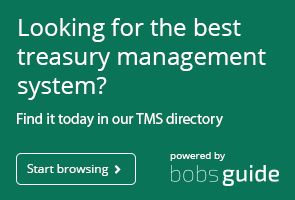Failing to keep tabs on your back office system can lead to poor performance. A new report by software provider Advanced Business Systems aims to help treasurers review their finance software and stay ahead of the game.
“A robust review of your finance system can reveal that, while it might be working well on the surface, it could be costing your business lost profit and wasting staff time through inefficient processes,” says Simon Fowler, Managing Director of Advanced Business Solutions, who has five top tips for approaching a review:
1. Carry out a thorough assessment
“Internally assess the current system, identifying where more support would be beneficial and what could be improved,” says Fowler. For example, he says, think about “whether the system complies with sector legislation or if flexible cloud hosting options are offered” and “whether existing suppliers have the capability to assist the business as it grows.”
2. Build a specific list
It’s important to keep focussed on what you really need, so draw up a list of what is essential, what is not important and what is “nice to have,” says Fowler - and bear in mind not just the functionality of the finance system, but your relationship with the future supplier as well.
“It is also worth bearing in mind any IT policy and strategy which may impact on the technological specifications required,” he says.
3. Plan the project - people, time and budget
To keep progress on track, together a team that will take responsibility for the project and identify any elements which need to be outsourced. “Set time scales and compile a realistic budget, allowing for initial set-up costs, future maintenance payments, and time for analysis and implementation. Don’t forget to consider the compatibility of new technology with any existing systems,” says Fowler.
4. Structure the supplier selection
“Start with a wide selection of suppliers and narrow it down through a process of tendering, demonstration, customer references, shortlisting and secondary meetings,” Fowler suggests. “Once a preferred supplier is chosen, review the contract requirements and final payment terms.”
5. Consider the future relationship with the chosen supplier
The supplier that you choose should be one that is suited to a long term, sustainable relationship, Fowler believes. “It is important to think about the sustainability of the relationship with the supplier. Look at their financial stability, the quality of the software, their commitment to investing in the product and their ability to offer upgrades as standard,” he says. “Is this is a supplier and team that will support the business’ goals?”
Finally, be prepared to invest time and effort to see the rewards.
“The review process can feel like a large undertaking at the start. However, if it is well planned and executed it can be extremely worthwhile and can make tangible differences to the way a business operates in terms of reducing manual administration, consolidating various systems for greater efficiency and enhancing the visibility and control of finance processes.”









